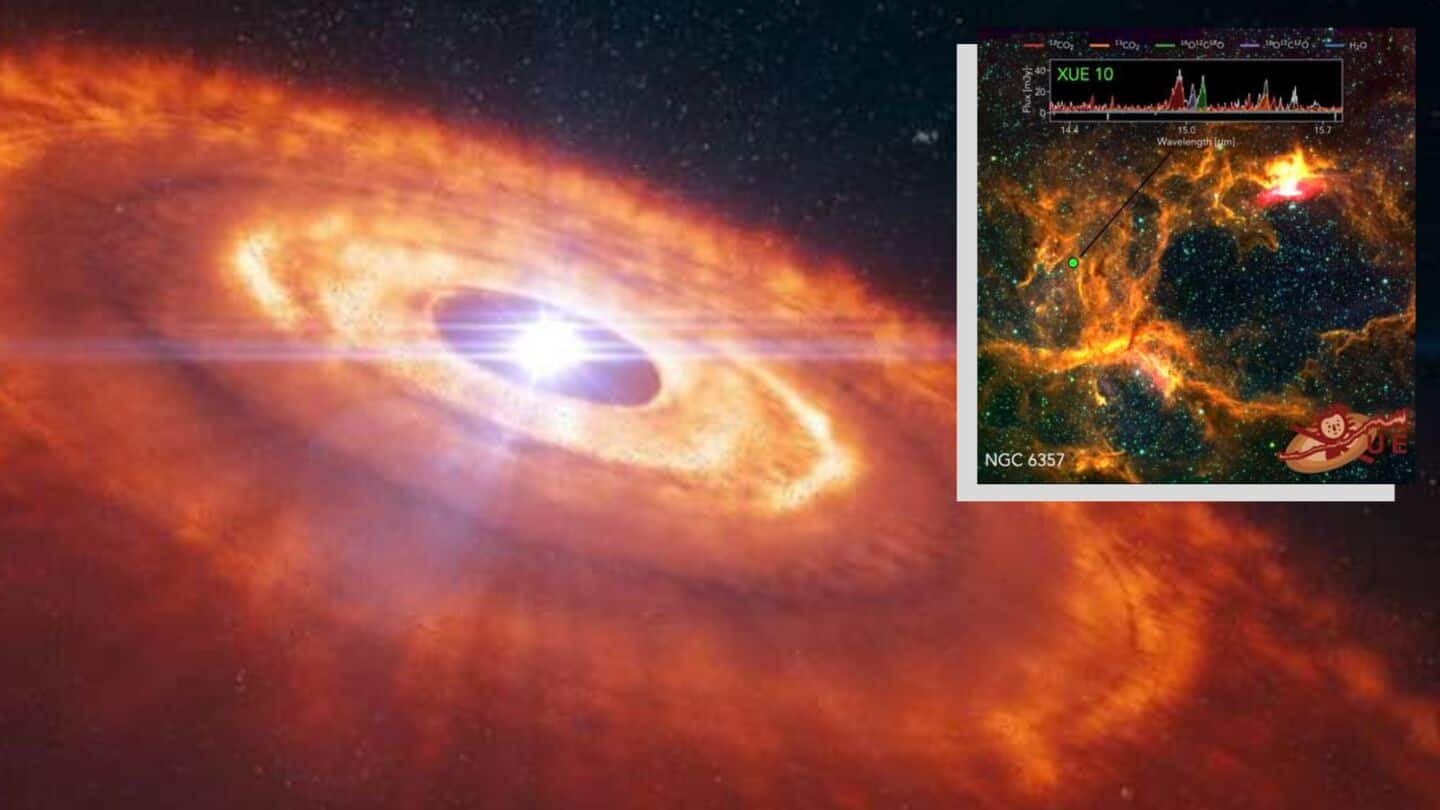
This CO2-rich disk challenges our theories of planet formation
What's the story
A team of astronomers, led by Jenny Frediani from Stockholm University, has discovered a planet-forming disk with an unusual chemical composition. The disk is rich in carbon dioxide (CO2) in areas where Earth-like planets could eventually form. The finding, made using the James Webb Space Telescope (JWST), contradicts long-held beliefs about the chemistry of planetary nurseries. The research was published in Astronomy & Astrophysics.
Discovery
Disk rich in carbon dioxide
Frediani, a Ph.D. student at Stockholm University's Department of Astronomy, explained that this disk is unlike most nearby planet-forming disks where water vapor dominates the inner regions. Instead, it is surprisingly rich in carbon dioxide. The JWST/MIRI spectrum shows a puzzlingly strong CO2 signature instead of the expected water vapor signatures in the disk's inner zones.
Evolutionary implications
Challenges current models of disk chemistry, evolution
The high CO2 levels relative to water in this disk cannot be easily explained by standard disk evolution processes. This challenges the current models of disk chemistry and evolution. Arjan Bik, a researcher at the same department, said such a high abundance of CO2 in the planet-forming zone is unexpected and suggests that intense ultraviolet radiation from either the host star/neighboring massive stars could be reshaping its chemistry.
Isotopic insights
Isotopic variants of CO2 detected
The scientists also detected rare isotopic variants of CO2, enriched in either carbon-13 or the oxygen isotopes 17O and 18O. These isotopologues could offer vital clues to long-standing questions about the unusual isotopic fingerprints found in meteorites and comets, relics of our own solar system's formation. The CO2-rich disk was discovered in the massive star-forming region NGC 6357, located around 1.7 kiloparsecs (about 53 trillion kilometers) away from Earth.
Radiation impact
Significance of the discovery
Maria-Claudia Ramirez-Tannus from the Max Planck Institute for Astronomy and lead of the eXtreme Ultraviolet Environments (XUE) collaboration, said this discovery shows how extreme radiation environments can alter the building blocks of planets. She stressed that understanding such effects is essential for grasping the diversity of planetary atmospheres and their habitability potential, since most stars and likely most planets form in such regions.